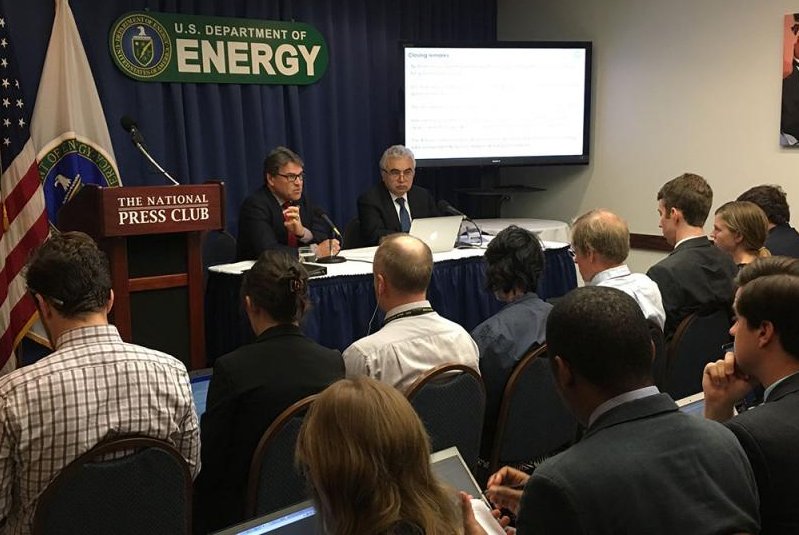Fatih Birol, the executive director of the International Energy Agency, meets in Washington with U.S. Energy Secretary Rick Perry to discuss global market factors. Photo courtesy of the IEA
July 19 (UPI) -- The United States stands in a unique position in the energy market with a robust shale oil sector and prospects for liquefied natural gas, the IEA said.
Fatih Birol, the head of the International Energy Agency, met in Washington with U.S. Energy Secretary Rick Perry to discuss global oil and gas market developments. According to the IEA, spending on shale oil exploration and production is on pace to grow by more than 50 percent this year, while U.S. natural gas will account for 40 percent of new global production in the next five years.
"The United States stands today at the heart of a twin energy revolution -- a booming shale oil and gas industry and also rising supplies of liquefied natural gas," Birol said in a statement.
In the last seven years, nearly $1 trillion in capital has gone toward exploration and production in the United States, even with the revenue stream drying up during last year's market decline. Another $200 billion went toward the midstream, or pipeline, sector in the United States since 2010.
For gas, the IEA said it expected some of the shale basins like the central Marcellus basin will see production gains even during a weakened market because producers are becoming more efficient. Within five years, that could translate to a Top 5 spot for the United States in terms of exports in the form of liquefied natural gas.
For oil, the United States is on pace to average 9.3 million barrels per day this year and 9.9 million barrels per day in 2018. If the 2018 forecast is reached, the United States will break a production record set in 1970.
U.S. President Donald Trump has put oil and natural gas at the forefront of his national energy strategy. Perry said the broad-based North American energy strategy would ensure "security, stability, and economic growth" for the region.
Trump has put fossil fuels ahead of renewable energy, though Perry's department last week steered $46.2 million toward the SunShot initiative, a program left over from the previous administration that aims to make solar power more competitive.
U.S. crude oil is competitive on the global market because West Texas Intermediate, the U.S. benchmark for the price of oil, is trading $3 less per barrel than the global benchmark Brent and about $1 per barrel less than a Middle East benchmark, Dubai. In April, the United States became a net exporter of natural gas for the first time.
A special permit is needed to send LNG to countries that don't have a free trade deal with the United States, which could be problematic for a Trump administration wary of such agreements. Birol added that some new LNG customers might not be long-term customers because of global prices and market competition.















